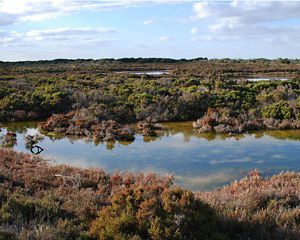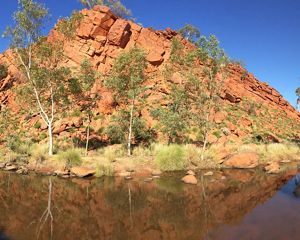The Lakes National Park
A haven for biodiversity and a protection success story
In 2022, The Nature Conservancy (TNC) assisted with the acquisition of The Lakes by the Queensland Government, protecting more than 43,000 hectares of significant conservation value habitat in Queensland. TNC's contribution was generously supported by the Wyss Foundation and Haley Mellin's Art into Acres initiative through Re:wild.
The purchase of The Lakes in February 2022 was the first under Queensland’s $262.5 million strategy to grow national parks by 2030. It was the biggest in the state’s history, until it was recently superseded by the acquisition of Vergemont station.
The former grazing property and now, new national park is on Gudjala country. The Lakes National Park increases protection of two bioregions, the Einasleigh Uplands and the Gulf Plains, and formalises protection of a Wetland of High Ecological Significance.
The wetlands are dominated by four unique lakes that, when full of water, support large numbers of wetland birds, including Brolgas, Black Swans and Glossy Black Ibis and during dry seasons the lakes become hyper saline.
The Lakes National Park also protects rare gums and unique forests, providing habitat for species that are unique and isolated. It's important habitat for threatened species like the vunerable Northern Greater Glider.
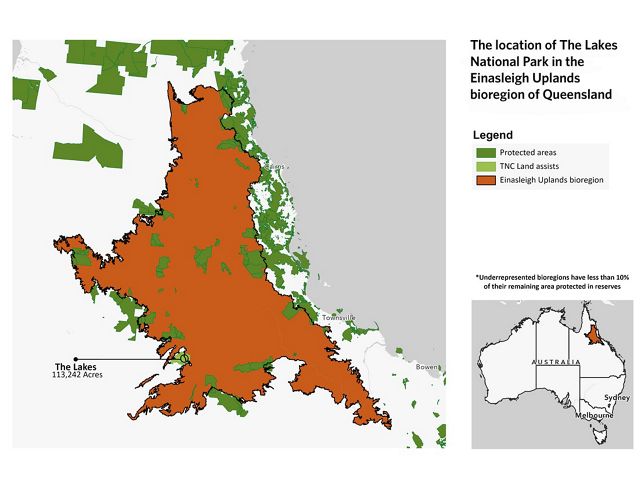
Quote: Dr Haley Mellin
It is an honour to support 43,330 hectares being added to the National Parks estate. These unique lakes and their surrounding woodlands and escarpments on top of the Great Dividing Range provide key habitat for wildlife and their protection will support biodiversity in Australia.
Returning land to Traditional Owners
The Nature Conservancy started negotiations to purchase The Lakes in 2019 with support from the Wyss Campaign for Nature. The Wyss Foundation and artist Haley Mellin’s Art into Acres initiative through Re:wild together donated $US1.82 million as part of the purchase price.
The land was purchased with a view to provide Gudjala First Nations people opportunities to engage in land conservation and indigenous cultural heritage management.
“The Wyss Foundation is proud to support the acquisition and protection of The Lakes. This region, part of Gudjala country and home to endangered species, saline lakes, wetlands, and cultures indigenous to Australia, has now been upgraded to a national park thanks to the efforts of The Nature Conservancy, Art into Acres through Re:wild, and the Australian state of Queensland,” said Molly McUsic, President of the Wyss Foundation.
Quote: Molly McUsic
The new national park will give Australia’s biodiversity and indigenous heritage a place to thrive.
A haven for wildlife
The Lakes is an important national park due to its location in a poorly protected region. It connects other protected areas and creates a safe haven for wildlife like the threatened Greater Glider and the Little Bent-wing Bat.
It has significant conservation values, including endangered regional ecosystems and ecosystems that have low or no protection in the existing protected area estate, such as the tall eucalypt forests dominated by Lemon-scented Gums, and Northern Cypress Pine woodlands. These forests support a high density of arboreal animals including Northern Greater Gliders and Common Brushtail Possums.
Through the creation of The Lakes National Park, vital habitat for a number of species, such as Squatter Pigeons and possibly Spectacled Hare-wallabies, is now protected. Other unique species have been also recorded on the property, including a tiny, threatened skink known as the Vine-thicket Fine-lined Slider, as well as a unique species of endemic Giant Burrowing Cockroach and two newly discovered species of Clam-shrimp, which are only found in this national park's lakes.
The Lakes
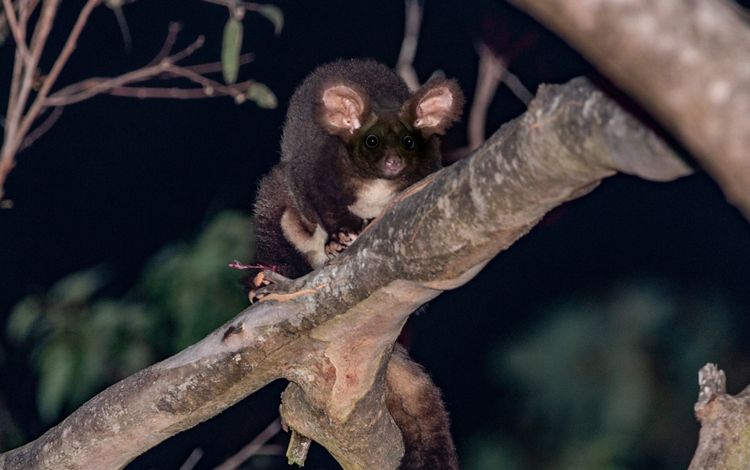

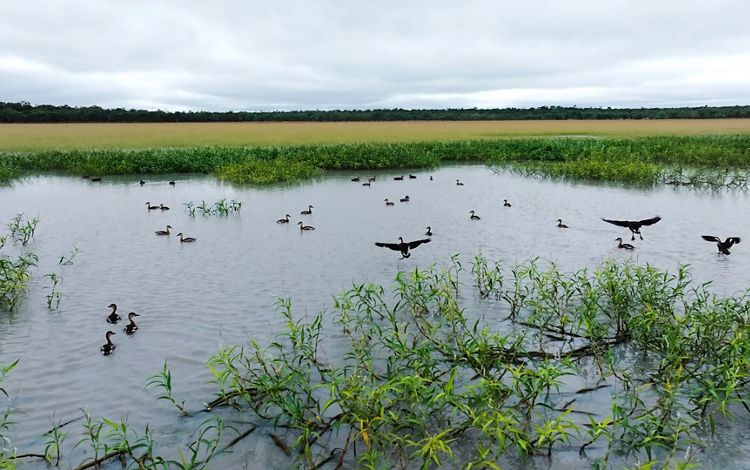
Fighting climate change with nature
Protecting areas like The Lakes is about more than just conserving our flora and fauna. It’s also a frontline in the battle against climate change.
Large ecosystems like forests and wetlands play a crucial role in carbon storage. Ecosystems like those found at The Lakes National Park can store a lot of carbon. As climate change forces us to consider ways to reduce carbon present in the atmosphere, it’s critical we protect the ecosystems that support this process.
Ensuring the health of landscapes like The Lakes National Park is one of the most effective ways to support natural solutions to a changing climate.
Meeting our 2030 goals
With the protection of The Lakes, Australia takes another crucial step towards its committment to protect 30% of our lands and and 30% of our oceans before 2030, to tackle the loss of biodiversity.
To achieve this goal, national governments, local communities, NGOs, private landholders and funders must work together to create lasting protection of the most critical places needed to support life on Earth. TNC is applying cutting-edge science and unlocking new forms of innovative funding through collaborative partnerships.
In 2023, The Nature Conservancy released the report Pathways to 30x30 which outlines the most effective ways for Australia to achieve 30x30.

